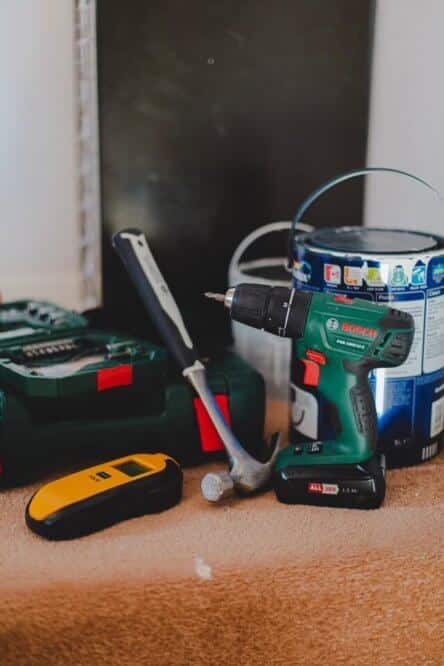Before doing any plumbing job in your home, you should learn how to avoid some of the basic mistakes. Now, if you already know the plumbing system in your home and have your toolbox ready, you came to the right place! In this article, we will discuss this topic “teflon tape vs thread sealant”
Learning how to use pipe thread sealants in a proper way should leave you worry-free of any water leakage or similar damages.
With both Teflon tape and thread seal compound available for home usage, it’s best to avoid damages that can be expensive to fix.
What is a Thread Sealant?
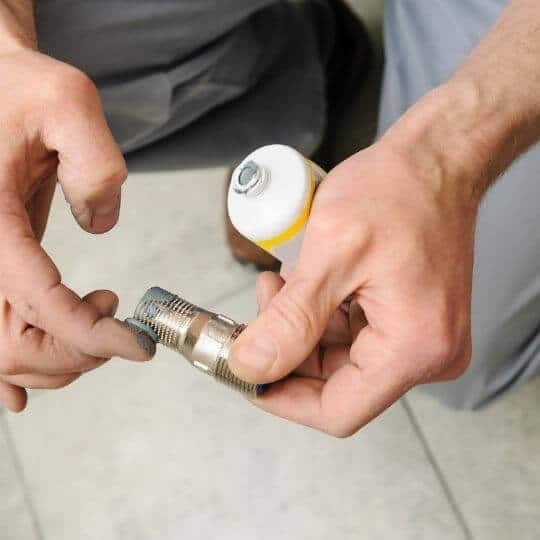
Thread sealants are used in order to seal and create airtight or liquid-tight seals to prevent leaks from the pipe threads.
The pipe system in your home, regardless of the pipe material, typically has to withstand a high amount of pressure. However, pipe threads can’t form the proper leakage-free joint by themselves.
This is where thread sealants come in handy!
When you hear a plumber mention thread sealants, it’s usually referring to one of two types of sealants:
- Adhesive compound (pipe dope) or
- Teflon tape
For decades, a specific compound was used in order to lubricate the pipe threads and create a tight joint. This glue, otherwise called ‘Pipe dope’ or ‘PVC glue’, is applied on the threaded pipe end with a brush or a finger (using gloves).
The paste sealant comes in a can, looks like a white to transparent sticky glue, and has a specific smell to it. Pipe joint compounds can also be different from one another as they sometimes contain different ingredients. [1]
Despite the difference in the ingredients, all paste sealants work in the same way. They simply seal the threads together by drying after application.
There is one downside to pipe adhesive that most people can’t ignore – it can get quite messy! That is why most opt for using Teflon tape instead.
To find out more about it, just read on.
Teflon Tape Thread Seal
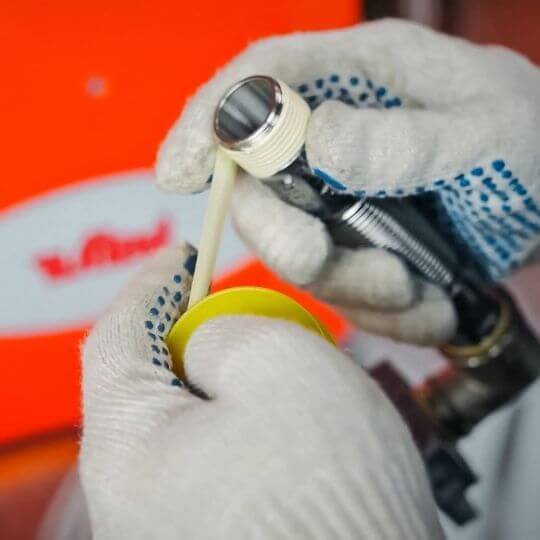
Teflon tape is basically a thread sealant tape, but with the sticky feature missing. One might wonder – how does it glue threaded pipe ends without the glue itself? How does it work?
The answer is quite simple. After you wrap the Teflon tape around the end of the pipe, it seals the ends by clogging them.
There is, however, one hidden complication here.
You have to wrap around the tape properly, otherwise, it will tear or unravel. The ripped pieces of tape can sometimes travel through the pipes and clog filters, causing unnecessary damage.
The right way to do it is to start from the end and follow the threads clockwise (in most cases).
Why Use Teflon Tape On Threads
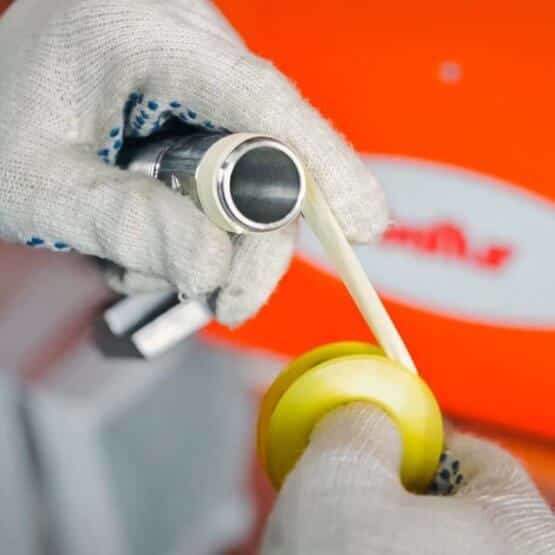
The short answer is: it’s a mess-free option and easier to use, for most people.
Now for the longer answer, there are many other advantages to using Teflon tape. Some of them include:
- it is cleaner than pipe dope
- reduces friction
- lubricates the threads
- easier to loosen the joints (if later needed)
- repels water
- prevents corrosion
- doesn’t over lubricate plastic threads
- they are color-coded
The neat part of using Teflon tape instead of pipe dope is obvious. If you’re a beginner, you will most likely choose this option instead.
Apart from cleanliness, tape sealant lubricates the threads and therefore reduces the friction of the threads under pressure.
How does that make it different from paste sealant?
Paste sealants lubricate the threads just as well, only they usually achieve a stronger seal which is harder to unscrew. This is why plumbers use pipe dope to create stronger seals.
To create a seal with the possibility of unscrewing it later on (if needed), use Teflon tape instead. It creates the seal just as effectively, without damaging the threads.
Secondly, some of the Teflon tapes contain PTFE (Polytetrafluoroethylene) – a plastic with fluorine atoms. This ingredient in Teflon tape allows for many benefits, among which are:
- low friction (reduces pressure)
- aversion to water and other chemicals (doesn’t dissolve or melt easily, also prevents corrosion of pipes)
- a high melting point (of around 620°F)
What Is The Best Thread Sealant
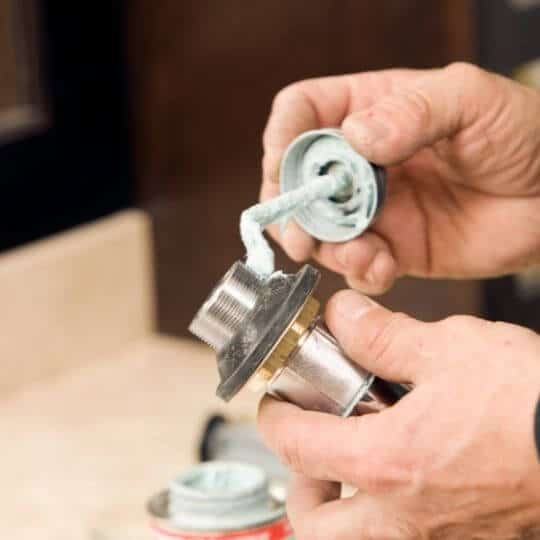
When deciding which one of these two sealants is the best option, you first have to look at the pipe material.
For example, say you are choosing to put the seal on the gas pipes, brass fittings, or plastic threads. Each fitting acquires a different treatment, as it will be under an individual setting, holding different amounts of pressure, etc.
Mostly, you won’t go wrong with using each of these in the proper way.
However, for the best quality results, you should know the general rules of what materials go best with which sealant.
For instance, pipe dope, even though it usually creates the strongest seal, won’t be the best option for all-plastic fittings. Using it on plastic threads can dissolve the plastic over time and lead to leaks.
In other words, not all chemicals in paste sealants pair the best with plastic pipes, as they are too strong for them. There is also a possibility of paste overly lubricating the plastic, creating an overly tight seal prone to breaking.
That being said, Teflon tape wins in plastic-to-plastic situations.
In other cases, choosing either of these two sealants boils down to your personal preference.
If you’re not afraid to get your hands dirty, you’ll choose pipe dope as a thread sealant.
Teflon Tape vs Thread Sealant
On the other hand, Teflon tape does come in different colors for different pipe materials. [3]
This can be both a good and a bad thing. If you choose the wrong colored tape or wrap the right one too thick or loose, it can create damages.
However, if you are one of those people who always read the instructions, then Teflon tape is the way to go.
Can You Use Teflon Tape and Thread Seal Together?
Using both Teflon tape and Pipe dope seems like the safest, most leakage-free option – and it is!
The question is, however, which one do you put on first and which one comes second?
This is how most DIY-ers do it: tape first, dope second! You won’t need to worry about completing with the tape only to find out there is leakage after turning the water on. [4]
The way double-seal works is that dope hardens the seal created by the tape and fills the possible gaps in it. This also ensures any tape that might be prone to tearing due to its low quality.
Teflon Tape vs Thread Sealant: End Line
Note that before any plumbing work you should have your toolbox and workplace prepared.
Knowing the plumbing system in your home and what you want each pipe joint to endure is half of the job.
After that, choose the right material for the pipes to use for the right setting. You won’t use the same pipe material for gas and water applications.
Work smarter, not harder.
The right application of the thread sealants is just as important as choosing the proper one for your situation.
If you decide to use the pipe dope, research on which pipe end (male or female) should you apply it and in which amount.
If, on the other hand, you choose to use Teflon tape, pick the right color for your pipe material. After that, wrap the tape around in the proper direction.
Both Teflon tape and paste sealant work just as effectively as pipe thread sealants. Knowing how to use them properly is more important than choosing either one.
In most cases, pipe material determines the choice more than personal preference, which comes second.
If still unable to choose, you can always opt for using both of them – which is the safest option.

Michael Davis is a heating & plumbing expert who currently works as independent contractor in SC. He also writes for Plumbertip.
For almost 10 years he worked on various plumbing tasks across South Carolina.
